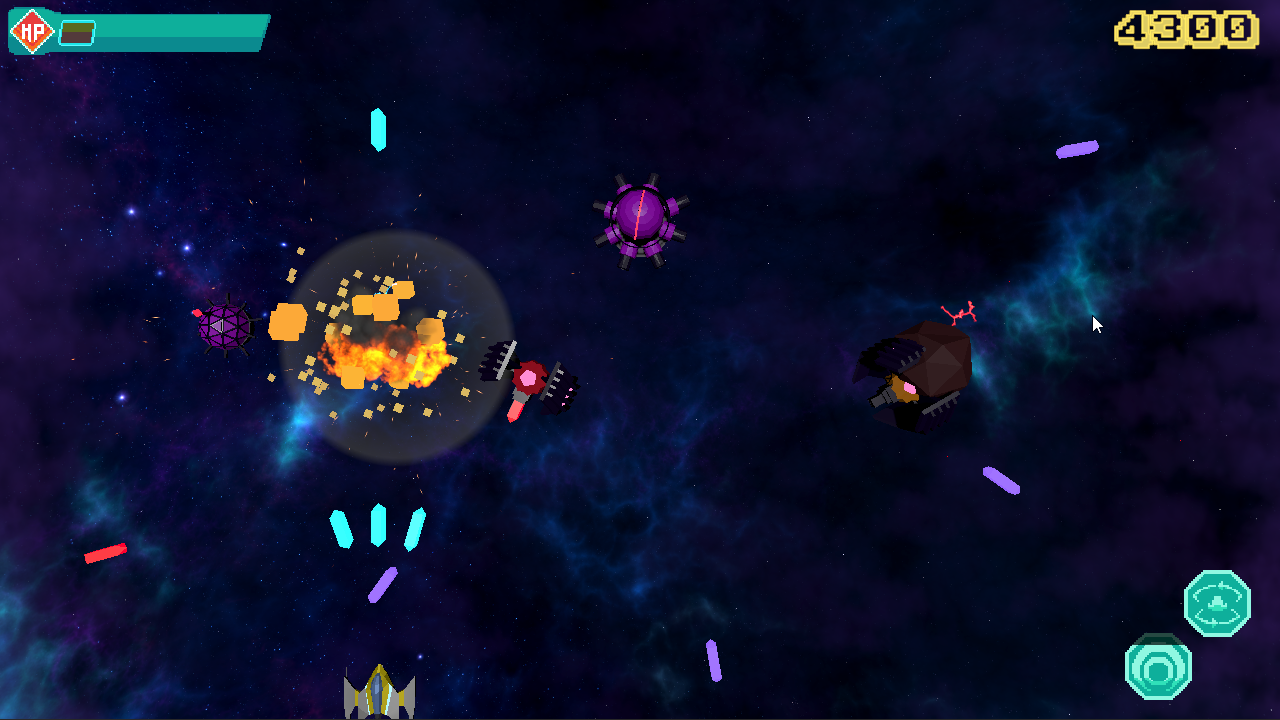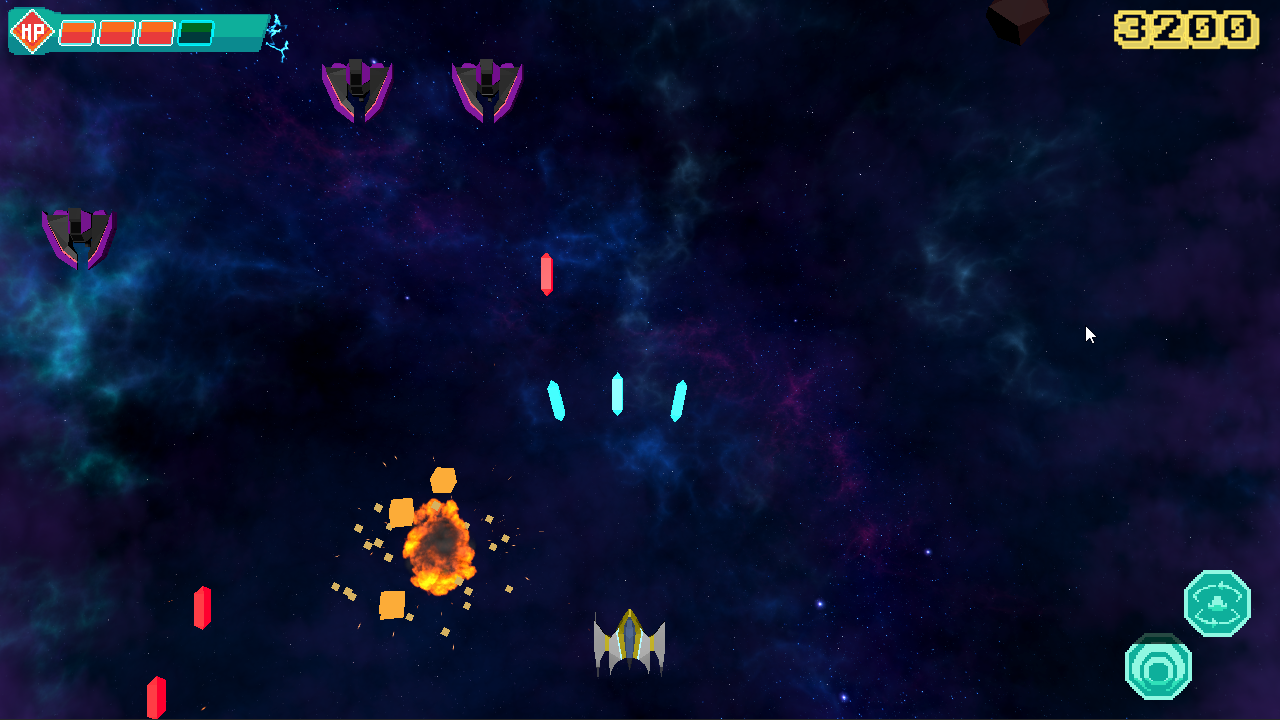Rogue Nebula
Summary
Developed during the summer session of the Video Game Development Club, Rogue Nebula challenges players to survive endless waves of enemies while aiming for a high score. Heavily inspired by classic arcade titles like Galaga, Defender (1981), and Space Invaders, the game features a scrolling 3D environment, reactive UI, vibrant special effects, and diverse enemy behaviors.
Gameplay
The player begins by entering their name for a leaderboard entry; if a name is not selected, they are labeled "anonymous." When start is pressed the player is thrust into battle immediately as endless waves of enemies barrage the screen. To survive, players must dodge incoming projectiles and retaliate with the weapons in their arsenal. To aid survival, players can use special abilities and select a wide array of weapons. Every eight waves, the difficulty increases, with the hardest level starting after wave sixteen. Enemies will continue to scale with the difficulty keeping the game a challenging and rewarding bullet-hell experience. High scores will be displayed for other players who open the game.
Implemented Features
| Name | Description | |
|---|---|---|
| High Score System | The high score persists across playthroughs using Unity's Scriptable Object System and a JSON save format. | |
| Player Abilities | The player is given a small set of unique abilities. Players can use an "Evade" ability, providing brief invulnerability and extra speed, and the "Bubble Shield," granting extended invulnerability. Each ability has a cooldown timer displayed on the HUD that communicates when abilities will be available again. | |
| Enemy Variety | The game includes four enemy types: a basic enemy type that flys back and forth, shooting periodically, radial enemies that fire bullets in all directions, bomber enemies that drop fused bombs, and homing enemies that track and shoot at the player’s position. | |
| Enemy Varients | The game features four unique enemy types as well as 3 types of varients for them. Each varient of a type of enemy has an increased attack speed, movement speed, health, and fire rate. | |
| Dynamic Wave System | The game reacts to the player's wave count. Every ten waves, new enemies are introduced, and more challenging variants of basic enemies appear, increasing difficulty. | |
| Particle System and Shaders | The game incorporates arcade-inspired hit and explosion particles, with voxel-based 3D effects and dynamic hit effects that change color based on the damaged entity. | |
| Music and Sound | Music and Sounds produced by a very talented member of the club, Edrick Fajardo. (efajard4@asu.edu) |
- Link to Game - https://heatwave-studios.itch.io/rogue-nebula
- Repository Link - GitHub


